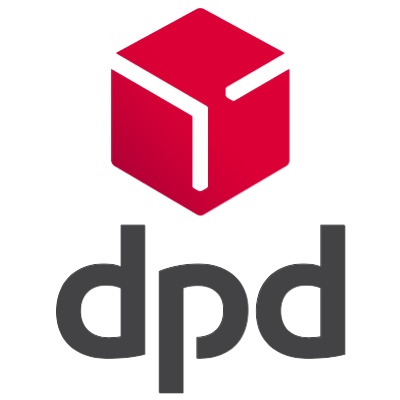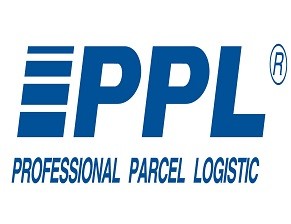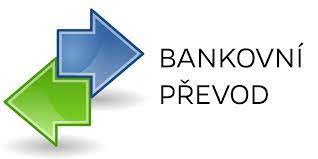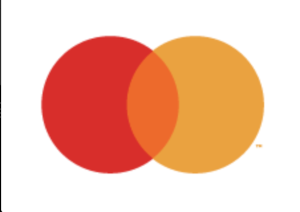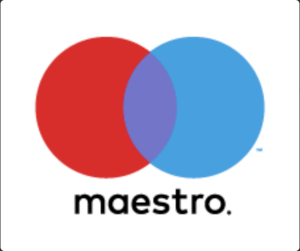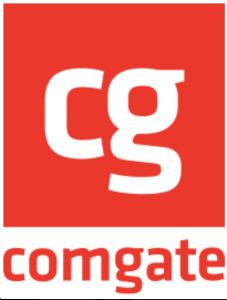For all DVB and ISDB reception types under Windows and Linux. A multi-standard TV card for the PCI Express slot with two TV tuners and twin CI slot.
The Digital Devices Octopus CI M2 is a multi-standard TV card for the PCI Express slot with two TV tuners and a twin CI slot for Windows® and Linux. This versatile and powerful DVB card is designed for demanding TV viewers as well as for professional and industrial use. It offers a wide range of reception types and stands out for its high reliability and long lifespan, making it ideal for 24/7 operation. With support for Unicable® and JESS® as well as Unicable® II, it also provides efficient distribution of satellite signals over a single cable.
With the Octopus CI M2, you can receive digital TV and radio signals in outstanding quality. Thanks to its modular design and support for numerous standards, the card flexibly adapts to your individual needs. Whether satellite, cable, or terrestrial reception – the Octopus CI M2 offers you maximum flexibility and performance. The integrated GTL port also enables seamless integration with other Digital Devices systems, such as the Octopus NET streaming servers for SAT>IP and multicast.
Key Features:
- Comprehensive Reception Standards:
- DVB-S (Satellite Tuner): Receives digital satellite signals in standard definition (SD).
- DVB-S2 (Satellite Tuner): Supports enhanced modulation and higher data rates for HD and UHD satellite signals.
- DVB-S2X (Satellite Tuner): Evolution of DVB-S2 for even higher bandwidths and efficiency.
- ISDB-S (Satellite Tuner): Digital satellite standard mainly used in Japan.
- DVB-C (Cable Tuner): Digital cable TV for a variety of channels and radio programs.
- ISDB-C (Cable Tuner): Digital cable standard mainly used in Japan.
- J.83 Annex B (Cable Tuner): Standard for digital cable TV, mainly used in North America and South Korea.
- DVB-T (Terrestrial Tuner): Receives digital terrestrial signals in standard definition.
- DVB-T2 (Terrestrial Tuner): Extension of DVB-T for higher resolutions and better compression.
- ISDB-T (Terrestrial Tuner): Digital terrestrial standard primarily used in Japan.
- Dual Tuner: The card features two independent tuners that can be flexibly configured for different reception types.
- Twin CI Slots: Supports two CI modules for decrypting Pay-TV channels that are not CI+ encrypted. Multi-Transponder Decryption (MTD) allows decryption of multiple channels simultaneously. Note: The CI slots do not support CI+.
- Expandable Modular Design: Modularly expandable to add additional modules and tuners, customizable to individual needs.
- GTL Port: Allows seamless integration with other Digital Devices systems and offers a high data transfer rate. It can be used, for example, to connect to Octopus NET streaming servers to support SAT>IP and multicast.
- Unicable®-, Unicable® II-, and JESS® Support: The card supports Unicable® (SCR - Single Cable Routing) according to EN50494 and JESS® (Jultec Enhanced Stacking System) as well as Unicable® II according to EN50607, enabling simple and efficient distribution of satellite signals over a single cable.
What is Unicable® and JESS®?
Unicable® is a standard for single-cable distribution of satellite signals. It allows multiple receivers to be supplied via a single coaxial cable. This is achieved by using special LNBs (Low Noise Block Converters) and multiswitches that process the signals so that they can be used independently by multiple receivers. JESS® (Jultec Enhanced Stacking System) is an extension of the Unicable® standard and offers additional functions and higher capacity. Unicable® II provides the same functionality as JESS® and is also standardized according to EN50607.
Technical Specifications:
- Reception Standards: DVB-S, DVB-S2, DVB-S2X, DVB-C, DVB-C2, DVB-T, DVB-T2, ISDB-T, ISDB-S, J.83 Annex B.
- Interface: PCIe.
- CI Slots: 2x for CI modules (no CI+).
- Maximum Resolution: 4K Ultra HD.
- Supported Operating Systems: Windows® 7, 8, 10, 11 and Linux.
- Unicable® Support: Yes, according to EN50494 and EN50607.
- DiSEqC 2.0: Yes.
- Power Consumption: approx. 7 watts.
Use Cases:
- 24/7 Operation: The card is designed for 24/7 operation and is ideal for industrial applications requiring high reliability and longevity.
- Compatibility: Supports numerous TV applications such as DVBViewer, MediaPortal, VDR, and Tvheadend.
- Green IT: Eco-friendly design with low power consumption and no use of tantalum or electrolytic capacitors.
DVB-S
| Modulation method: | QPSK |
| Symbol rate: | 1 to 45 Mbd |
| Coding rate: | 1/2, 2/3, 3/4, 5/6, 7/8 |
| Synchronization range: | |
| AFC range | +5 MHz (typ) |
DVB-S2
| Modulation method: | 32APSK, 16APSK, 8PSK, QPSK |
| Symbol rate: | 32APSK 1 to 40 Mbd |
| 16APSK 8PSK, QPSK 1 to 45 Mbd |
| Coding rate: | 32APSK 3/4, 4/5, 5/6, 8/9, 9/10 |
| 16APSK 2/3, 3/4, 4/5, 5/6, 8/9, 9/10 |
| 8PSK 3/5, 2/3, 3/4, 5/6, 8/9, 9/10 |
| QPSK 1/4, 1/3, 2/5, 1/2, 3/5, 2/3, 3/4, 4/5, 5/6, 8/9, 9/10 |
| Synchronization range: | |
| AFC range | +5 MHz (typ) |
DVB-S2X| Modulation method: | 32APSK-L, 32APSK, 16APSK-L, 16APSK, 8APSK-L, 8PSK, QPSK |
| Symbol rate: | 32APSK-L, 32APSK 1 to 40 Mbd |
| 16APSK-L, 16APSK, 8APSK-L, 8PSK, QPSK 1 to 45 Mbd |
| Coding rate: | 32APSK-L 2/3 |
| 32APSK 32/45, 11/15, 7/9 |
| 16APSK-L 1/2, 8/15, 5/9, 3/5, 2/3 |
| 16APSK 26/45, 3/5, 28/45, 23/36, 25/36, 13/18, 7/9, 77/90 |
| 8APSK-L 5/9, 26/45 |
| 8PSK 23/36, 25/36, 13/18 |
| QPSK 13/45, 9/20, 11/20 |
| Synchronization range: | |
| AFC range | +5 MHz (typ) |
ISDB-S
| Symbol rate: | 28.86 Mbd |
| Modulation method: | 8PSK, QPSK, BPSK |
| Convolutional-coding rate: | 8PSK 2/3 |
| QPSK 1/2, 2/3, 3/4, 5/6, 7/8 |
| BPSK 1/2 |
| Synchronization range: | |
| AFC range: | +7 MHz (typ) (when operating with AFC automatic control) |
DVB-T
| Bandwidth: | 6 MHZ, 7 MHZ, 8 MHZ |
| FFT size: | 2K, 8K |
| Guard interval length: | 1/32, 1/16, 1/8, 1/4 |
| Carrier modulation scheme: | QPSK, 16QAM, 64QAM |
| Convolutional-coding rate: | 1/2, 2/3, 3/4, 5/6, 7/8 |
| Synchronization range: | |
| AFC range | ±900 kHz (typ) |
DVB-T2
| Bandwidth: | 5 MHZ, 6 MHZ, 7 MHZ, 8 MHZ, 1/7 MHZ |
| FFT size: | 1K, 2K, 4K, 8K, 16K, 32K (included extended mode) |
| Guard interval length: | 1/32, 1/16, 1/8, 1/4, 1/128, 19/128, 19/256 |
| Carrier modulation scheme: | QPSK, 16QAM, 64QAM, 256QAM |
| Convolutional-coding rate: | 1/2, 3/5, 2/3, 3/4, 4/5, 5/6 (T2-Base), |
| 1/2, 3/5, 2/3, 4/3, 1/3, 2/5 (T2-Lite) |
| Synchronization range: | |
| AFC range | +900 kHz (typ) |
ISDB-T| Mode: | Mode1(2K), Mode2(4K), Mode3(8K) |
| Guard interval length: | 1/32, 1/16, 1/8, 1/4 |
| Carrier modulation scheme: | QPSK, 16QAM, 64QAM, DQPSK |
| Convolutional-coding rate: | 1/2, 2/3, 3/4, 5/6, 7/8 |
| Synchronization range: | |
| AFC range | +700 kHz (typ) |
DVB-C
| Symbol rate: | 0.7 to 7 Mbd |
| Roll-off rate: | 0.15 |
| Carrier modulation scheme: | 16QAM, 32QAM, 64QAM, 128QAM, 256QAM |
| Synchronization range: | |
| AFC range | ±500 kHz (typ) (when operating with AFC automatic control) |
ISDB-C
| Symbol rate: | 5.274 Mbd |
| Roll-off rate: | 0.13 |
| Carrier modulation scheme: | 64QAM, 256QAM |
| Synchronization range: | |
| AFC range | +250 kHz (typ) (when operating with AFC automatic control) |
J.83 Annex-B
| Symbol rate: | 5.361 Mbd (256QAM)/5.067 Mbd (64QAM) |
| Roll-off rate: | 0.12 (256QAM)/0.18 (64QAM) |
| Carrier modulation scheme: | 256QAM, 64QAM |
| Synchronization range: | |
| AFC range | +270 kHz to -300 kHz (typ) |
